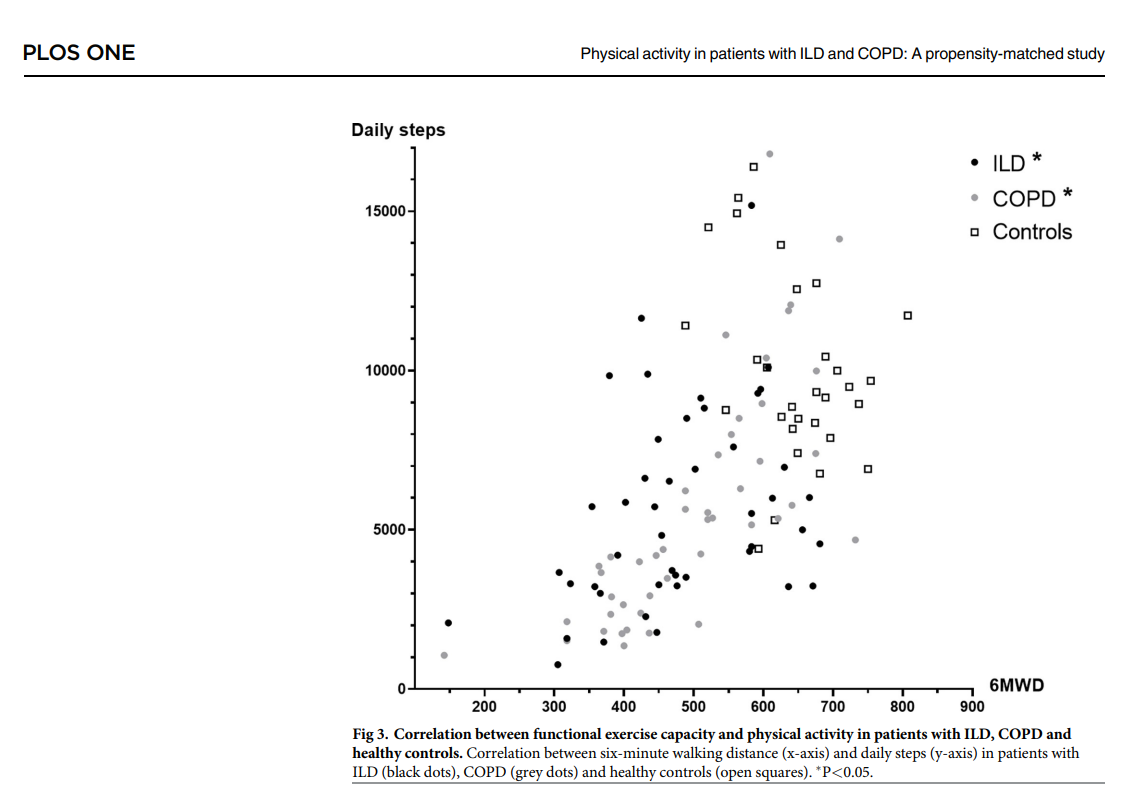Innovation
The innovation lies in the use of propensity matching to create comparable groups across different chronic respiratory conditions and healthy controls, thereby minimizing confounding variables in PA assessment. Additionally, the study utilized advanced statistical analyses to explore PA patterns and their correlates with clinical characteristics.
Evaluation System
The study assessed the total amount of physical activity (PA) in terms of average daily step count. It also examined PA intensity expressed as average METs during waking hours (7 AM to 10 PM) and when active (≥1.5 METs). Furthermore, PA outcomes based on intensity were determined, calculating the average daily time spent in moderate to vigorous physical activity (MVPA) (METs ≥3.0).
Assessment
Measuring the total amount of physical activity in terms of daily average steps, as well as the intensity of physical activity expressed in METs (Metabolic Equivalent Task), was conducted. Additionally, the amount of time participants spent engaged in moderate-to-vigorous physical activity (MVPA), using a threshold of 3.0 METs, was evaluated. This provides a detailed understanding of the physical activity patterns of the study subjects and can offer valuable information for public health and physical activity research.
The article primarily recommends moderate to vigorous physical activity (MVPA), defined in the study using an intensity threshold of 3.0 METs. This type of activity includes exercises that significantly increase heart rate and breathing, such as running, swimming, or engaging in competitive sports.
References
Breuls S, Pereira de Araujo C, Blondeel A, Yserbyt J, Janssens W, Wuyts W, et al. (2022) Physical activity pattern of patients with interstitial lung disease compared to patients with COPD: A propensity-matched study. PLoS ONE 17(11): e0277973.
doi.org/10.1371/journal. pone.0277973








